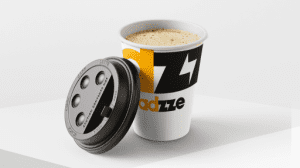In today’s competitive marketing landscape, businesses are constantly evaluating advertising channels that provide maximum return on investment (ROI). Advertising on gas stations has long been seen as an effective way to capture the attention of drivers and pedestrians. However, with evolving consumer behavior and a growing demand for more personal and interactive experiences, in-hands advertising is emerging as a more effective alternative. This blog delves into a comparative analysis of both advertising strategies, highlighting why in-hands advertising offers better engagement, cost-effectiveness, and targeted reach.
Understanding Advertising on Gas Stations
Gas station advertising involves placing ads at high-traffic fuel stations, targeting a broad audience with digital screens, pump toppers, window posters, and even promotional signage inside convenience stores. The rationale behind this approach is that drivers and passengers will see these ads while refueling or shopping for convenience items.
Advantages of Advertising on Gas Stations
1. High Visibility: 
Gas stations attract thousands of visitors daily, offering a prime opportunity for brand exposure.
Digital screens and pump toppers provide an unavoidable medium where people are stationary, making it easier to capture their attention.
2. Broad Audience Reach:
The diverse demographic visiting gas stations, including commuters, travelers, and delivery drivers, allows brands to reach a wide spectrum of potential customers.
3. Location-Based Targeting:
Ads can be tailored to regional preferences, enabling businesses to engage local communities effectively.
Drawbacks of Gas Station Advertising
Despite its advantages, advertising on gas stations comes with several limitations that marketers should consider:
1. Limited Consumer Engagement:
Most gas station ads are passive, lacking interactivity and requiring the consumer to remember the message for later action.
2. High Costs with Uncertain ROI:
Advertising on gas stations often comes with high placement fees, ranging from $200 to $1,500 per station per month, making it expensive compared to other forms of advertising.
The lack of precise tracking metrics can make it challenging to assess the true effectiveness of the campaign.
3. Short Attention Span:
The average time spent at a gas pump is only 3-5 minutes, limiting the window of opportunity to make an impact.
In-Hands Advertising: A More Engaging Alternative
In-hands advertising is an innovative marketing strategy that places brand messages directly into consumers’ hands using everyday items such as coffee sleeves, pharmacy bags, hotel key cards, and bar coasters. This strategy leverages touchpoints where consumers are more receptive, ensuring better engagement and recall.
Advantages of In-Hands Advertising
1. Direct and Personal Engagement: 
In-hands advertising delivers brand messages in a personal way, creating a tangible connection with the consumer.
When customers hold branded items like coffee sleeves or pharmacy bags, they interact with the advertisement for extended periods, increasing brand retention.
2. Cost-Effective with Higher ROI:
In-hands advertising offers lower cost-per-thousand-impressions (CPM), typically ranging from $2 to $10, compared to the higher costs of gas station ads.
This makes it an affordable option for small businesses looking to maximize reach without overspending.
3. Enhanced Targeting Capabilities:
Brands can strategically place in-hands ads in venues that cater to specific demographics, such as gyms for fitness-related products or restaurants for food delivery services.
This precision targeting leads to better audience segmentation and higher conversion rates.
4. Sustainable and Eco-Friendly:
Unlike static gas station ads, in-hands advertising can incorporate biodegradable materials, appealing to eco-conscious consumers and enhancing brand reputation.
Comparing In-Hands Advertising to Gas Station Advertising

Why In-Hands Advertising is the Better Choice
While advertising on gas stations offers visibility, it lacks the engagement and targeted reach that in-hands advertising provides. The ability to place brand messages directly into consumers’ hands at critical moments—whether they are enjoying a coffee, picking up prescriptions, or checking into a hotel—ensures deeper interaction and stronger brand recall.
Use Cases for In-Hands Advertising
1. Healthcare Industry:
Pharmacy Bags: A pharmaceutical company can promote flu shots using branded pharmacy bags with QR codes leading to online appointment scheduling.
Impact: Increased awareness and appointment bookings with trackable engagement.
2. Hospitality Industry: 
Hotel Key Cards: A travel brand can advertise exclusive vacation packages through hotel key cards, capturing travelers at their destination.
Impact: Enhanced booking conversions and customer engagement.
3. Food and Beverage Industry:
Coffee Sleeves: A food delivery service can advertise discount codes on coffee sleeves distributed at local cafés.
Impact: Increased app downloads and first-time customer acquisitions.
4. Entertainment Industry:
Bar Coasters: A streaming service can promote new shows with QR codes on bar coasters at restaurants and pubs.
Impact: Boosted streaming subscriptions and social media buzz.
FAQ: Common Questions About In-Hands Advertising vs. Gas Station Advertising
1. Is in-hands advertising more cost-effective than gas station advertising?
Yes, in-hands advertising offers lower CPM rates, making it a more budget-friendly option with higher ROI potential.
2. How can I track the success of an in-hands advertising campaign?
By incorporating QR codes, unique promo codes, or custom landing pages, you can easily measure engagement and conversions.
3. What types of businesses benefit most from in-hands advertising?
Any business looking to target specific demographics with personal and tangible engagement, such as healthcare, hospitality, and food services.
4. Is in-hands advertising eco-friendly?
Yes, many in-hands advertising materials use biodegradable or recycled materials, making it a sustainable option.
5. Can in-hands advertising be combined with digital campaigns?
Absolutely! Brands can integrate in-hands ads with online promotions, enhancing their multi-channel marketing strategies.









